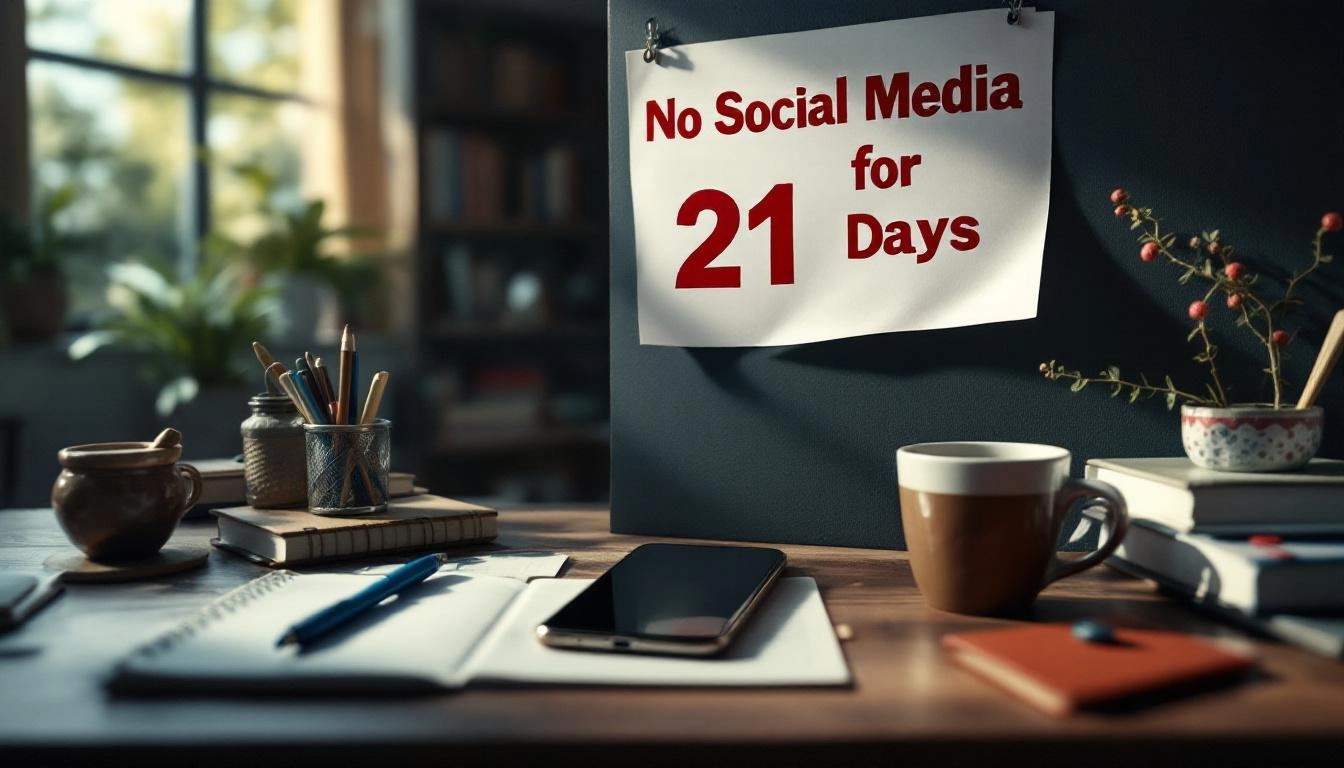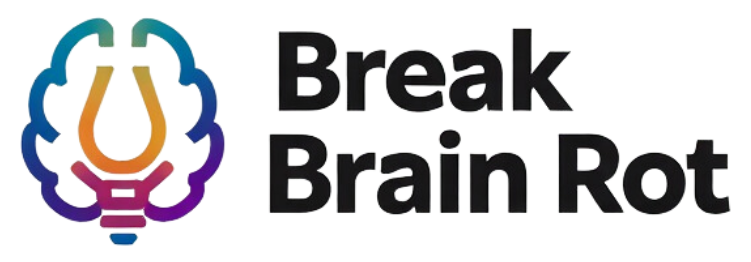1. **Focus Keyword Analysis**
– **Focus Keyword:** no social media for 21 days
– **Primary Keyword:** 21-day social media detox challenge
– **Synonyms & Related Terms:** social media break, social media cleanse, digital detox, social media fast, 3-week social media detox, unplug for 21 days
– **Variations:**
1. 21 days without social media
2. quitting social media for 21 days
3. digital detox challenge
4. 21-day social media cleanse
5. 3-week social media detox
6. no social apps for 21 days
7. social media detox program
**Approach:** Use “no social media for 21 days” in the introduction, headings, and conclusion. The primary keyword “21-day social media detox challenge” will appear in strategic places like H2s and key explanations. Variations will appear in transitional sentences to maintain flow.
2. **Article Structure & Section Planning**
– **Introduction** (150 words)
– **The Psychology Behind Social Media Dependence** (200 words)
– Why Our Brains Crave the Scroll
– How Social Media Impacts Concentration
– Emotional Effects of Overuse
– **What Happens When You Go No Social Media for 21 Days** (200 words)
– Week 1: Withdrawal
– Week 2: Mental Reset
– Week 3: Sustainable Habits
– **How the 21-Day Social Media Detox Challenge Improves Focus** (200 words)
– Reduced Digital Noise
– Reconnecting with Purposeful Work
– Enhanced Creativity
– **Tips to Complete the Challenge** (200 words)
– Preparation
– Replacement Activities
– Accountability
– **Real-Life Experiences** (150 words)
– Personal Stories
– Outcomes
– Continuing After Detox
– **FAQ Section** (150 words)
– **Conclusion & CTA** (100 words)
**Total:** ≈ 1,200 words
3. **Secondary Keywords**
– digital detox benefits
– improve focus without social media
– mindfulness and technology
– productivity improvement
– how to quit social media
– benefits of going offline
– better mental health habits
– concentration improvement tips
– sustainable digital balance
– effects of quitting social media
4. **Introduction & Conclusion**
– **Introduction:** Present how social media dominates attention, how it drains focus, and introduce the “no social media for 21 days” experiment as a path to regain clarity and mental balance.
– **Conclusion:** Emphasize benefits like increased focus and peace, motivate readers to try their own *21-day social media detox challenge*, and include a CTA linking to a related digital wellness article.
5. **Potential FAQ Questions**
1. What happens when you stop using social media for 21 days?
2. How to handle boredom during the 21-day social media detox challenge?
3. What are the mental benefits of going without social media?
4. Can I use messaging apps during the detox?
5. How can I measure focus improvement?
6. What should I do after finishing the challenge?
7. How to resist the urge to check social apps?
6. **Keyword Incorporation Strategy**
– Focus keywords: Introduction, Section 2 (main focus), Conclusion
– Secondary terms: Scattered evenly through body paragraphs and FAQs
– Maintain natural flow; each H2 contains at least one keyword variation.
7. **Content Outline Breakdown**
– Hook each section with relatable scenarios (notifications, FOMO, regained calm).
– Use conversational examples (e.g., “you might catch yourself reaching for your phone automatically”).
– Create smooth transitions between weeks and benefits.
– Estimate 100–150 words per subsection for an organic rhythm.
8. **Internal Linking Strategy**
– Link to related articles:
1. “#internal-link” – on digital minimalism benefits
2. “#internal-link” – mindfulness practices
3. “#internal-link” – habit formation
4. “#internal-link” – creating healthier tech habits
5. “#internal-link” – productivity tips
9. **Potential Reader Challenges**
– **Challenge 1:** Fear of missing out → Address by explaining real gains (peace, focus).
– **Challenge 2:** Work or social obligations → Offer boundary-setting tips.
– **Challenge 3:** Boredom → Suggest enriching replacements.
– **Challenge 4:** Fear of relapse → Discuss mindful reintroduction.
– **Challenge 5:** Skepticism about benefit → Provide real-life examples and data.
In a world constantly buzzing with notifications, memes, and messages, staying focused has become a rare skill. If you’ve ever found yourself aimlessly scrolling for “just five more minutes,” you’re not alone. The idea of going no social media for 21 days might sound impossible at first — but the 21-day social media detox challenge has proven to be a powerful reset for many. By stepping back from digital noise, you can rediscover your focus, mental clarity, and productivity.
Table of Contents
- The Psychology Behind Social Media Dependence
- What Happens When You Go No Social Media for 21 Days
- How the 21-Day Social Media Detox Challenge Improves Focus and Productivity
- Tips to Successfully Complete the No Social Media for 21 Days Challenge
- Real-Life Experiences and Results After a 21-Day Detox
- Frequently Asked Questions
- Conclusion – Rediscovering Focus After 21 Days Offline
The Psychology Behind Social Media Dependence
Why Our Brains Crave the Scroll
Every time you open an app and see a new like or comment, your brain releases a small hit of dopamine — a feel-good chemical that keeps you hooked. Social platforms are designed to exploit this loop, similar to how slot machines keep gamblers playing. According to Psychology Today, these dopamine-driven rewards reinforce habitual checking, making social media use feel almost automatic.
How Social Media Impacts Concentration and Mental Load
Constant scrolling fragments your attention. Notifications, pop-ups, and newsfeeds flood your senses, demanding constant engagement. This creates cognitive overload, leaving little room for deep focus. Studies suggest that frequent task-switching can reduce productivity by as much as 40%. You can read more about reducing cognitive clutter through digital minimalism.
The Emotional Effects of Overuse
Beyond distraction, social media can fuel anxiety, envy, and chronic self-comparison. The fear of missing out (FOMO) and exposure to curated perfection can impact self-esteem. A Harvard Health article highlights growing links between heavy social use and anxiety, making a detox both mentally and emotionally restorative.

What Happens When You Go No Social Media for 21 Days
The First Week – Withdrawal and Awareness
The first few days can feel restless. You’ll instinctively reach for your phone, only to realize there’s nothing to check. But you’ll also start noticing small victories — uninterrupted meals, deeper conversations, and longer attention spans. The awareness stage is the hardest, but also the most eye-opening.
The Second Week – Mental Reset and Clarity
By week two, you begin feeling lighter. Without the constant buzz of updates, your brain recalibrates. You’ll sleep better, think more clearly, and start experiencing a calm focus that might have felt impossible before. Many report this week as the turning point of the 21-day social media detox challenge.
The Third Week – Building Sustainable Habits
The final stretch transforms short-term abstinence into lasting awareness. Instead of reflexively opening apps, you’ll spend your energy on constructive tasks. This stage is perfect for integrating mindfulness and habit formation techniques to sustain your digital freedom.
How the 21-Day Social Media Detox Challenge Improves Focus and Productivity
Reduced Digital Noise = Increased Mental Bandwidth
When you cut down digital chatter, you reclaim cognitive space. Without constant interruptions, your brain can fully engage in single tasks. The result? Quicker problem-solving and higher quality concentration.
Reconnecting with Purposeful Work
Many participants find that quitting social media for 21 days reignites their drive. Without distractions, tasks that once felt overwhelming become achievable. Research on multitasking from APA shows that focus improves dramatically when external demands are minimized.
Enhanced Creativity and Problem Solving
When your mind isn’t bombarded with endless updates, you get bored — and boredom can be the birthplace of creativity. During the detox, many rediscover passions like writing, sketching, or simply thinking deeply.
Tips to Successfully Complete the No Social Media for 21 Days Challenge
Preparation and Setting Boundaries
Start by deleting apps or logging out. Turn off notifications and let friends know you’re on a detox. Setting up clear boundaries helps reduce temptation and creates mental distance right away.
Alternative Activities to Fill the Gap
Replace screen time with reading, exercise, or journaling. Engaging in mindfulness practices like meditation or nature walks helps manage urges and enhances self-awareness.
Tracking Progress and Staying Accountable
Document your experience daily. Journaling or using a detox tracker helps you see tangible progress, reinforcing motivation over the 21 days.
Real-Life Experiences and Results After a 21-Day Detox
Personal Transformations
Those who’ve gone no social media for 21 days often describe profound clarity. They rediscover hobbies, reconnect with loved ones, and regain control over their mental energy.
Common Outcomes Observed
Improved sleep, higher focus, and reduced anxiety are among the most common benefits. Many note a calmer mind and a sense of regained time.
What to Do After the Challenge Ends
After completing the detox, reintroduce apps selectively. Follow accounts that add genuine value and set time limits. A digital wellness expert suggests maintaining ongoing weekly “unplug” periods to preserve balance.
Frequently Asked Questions
What should I expect during the first few days of the no social media for 21 days challenge?
You might experience restlessness or FOMO initially. However, within a few days, you’ll notice more presence and better focus in daily tasks.
Can I still use messaging apps during the 21-day social media detox challenge?
Yes, if they’re vital for communication. The goal isn’t total disconnection, but to eliminate endless scrolling and comparison-driven behavior.
How can I measure improvement in focus after going no social media for 21 days?
Keep a daily log of tasks completed, mood changes, and time spent offline. Apps like RescueTime can track your productivity growth objectively.
What if my work requires social media?
Set strict time blocks for professional use only, and avoid personal scrolling outside those limits.
What long-term benefits can I expect?
Stronger attention span, reduced anxiety, and a renewed sense of control over how you spend your time online.
Conclusion – Rediscovering Focus After 21 Days Offline
Completing the 21-day social media detox challenge is more than a break — it’s a reset. By embracing the no social media for 21 days experiment, you’ll rediscover mental clarity, intentional living, and deeply focused work. Start your detox today and explore our guide to healthier tech habits for sustaining your newfound balance.


